How To Fix Hard Skin On Feet
A long winter and spring stuck inside in the dry air may have made the skin on your feet, especially your heels, super dry — dry enough to crack like a fault line. And while COVID-related self-isolation may tempt you to keep your feet hidden, cracks in your heels can fracture into deep cuts, or fissures, that can be pretty painful and even get infected. We asked board certified dermatologists Sheel Desai Solomon, MD, founder of Preston Dermatology & Skin Surgery in North Carolina and Samer Jaber, MD, founder of Washington Square Dermatology in New York City, what causes dry, cracked heels and the best treatment for dry heels.
IN THIS ARTICLE What causes dry, cracked heels | How to care for dry, cracked heels | Treating dry or cracked heels | What if over-the-counter treatments don't work?
What causes dry, cracked heels
"Cracked heels occur when you have a disruption of your skin barrier," explains Jaber. "It can be from a medical condition, like psoriasis or eczema, or can occur when your skin is very dry."
Other variables that can dry skin on heels enough to crack are age (your skin gets thinner, less elastic and some common medications can contribute) and, of course, winter can be quite the culprit. "Heels are at their worst in winter," says Solomon. "Indoors and outdoors there is less humidity in the air, and a lack of humidity causes the skin to become drier. Drier skin means more cracking and peeling." This kind of cracking can cause wounds that can easily get infected if not treated, and if you happen to have a compromised immune system or diabetes, an infection can become a serious health risk, Solomon says.
How to care for dry, cracked heels
1. Keep your feet clean and moisturized
Solomon says diligence in keeping your feet clean and moisturized will keep you on the good foot. "Wash feet with non-foaming hydrating cleanser (typically in a cream or milk form) to keep foot skin from drying further and moisturize still-damp feet after every bath or shower," she recommends. "That's when it's time to apply products with petrolatum, glycerin, shea butter, vitamin E or jojoba. These ingredients are very effective at preventing moisture loss." She also recommends a kitchen cabinet remedy to try — honey. "Honey is full of antimicrobial and antibacterial properties great for cleansing and healing wounds, particularly Manuka honey," she says, saying you can create your own honey foot mask by combining it with a drop of almond oil and slathering it on your heels.
2. Slough off dead skin
To prevent cracks, exfoliation is key. Both experts extol the virtues of moisturizers with exfoliants like urea (not urine, but a similar compound that has been shown to help moisture seep into skin), and salicylic acid, to help prevent heel cracks with regular use. Solomon also recommends using a "safe foot file that doesn't look like a cheese grater" to remove dead skin. "Using a foot file on your feet after a shower or bath can be a great way to avoid thick calluses or cracks," she says. "However, if the file has sharp teeth, it is putting you at risk for cuts or scrapes. The goal is to remove the old, dead skin but leave the healthy layer intact to protect [against] infection."
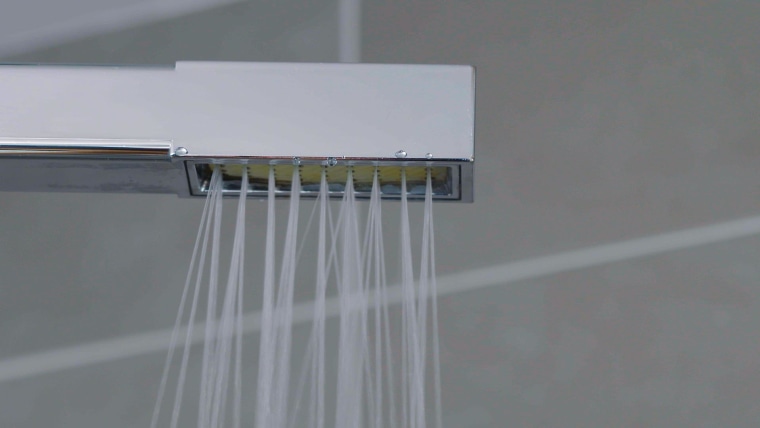
3. Seal up deep cracks
Cracked heels that have reached the point where they've started to bleed can be extremely painful, warns Solomon. Both experts say liquid bandages are an extremely effective way of sealing up cracks to ease the pain of walking on torn skin while keeping the wounds clean.
4. Wear socks made of natural materials
The damp, dark environment of wet socks in shoes and boots can bring on a fungal foot infection that resembles dry skin, warns Solomon. To prevent this from happening, she advises choosing winter socks made from natural materials, such as cotton or wool rather than synthetic blends, to keep your feet sweat and bacteria-free. "Materials like cotton and wool are naturally more absorbent and these moisture-wicking qualities are extremely important during the winter months. An added bonus is that your feet are less likely to smell, too," she says. Jaber says his trick to beat cracks in severe dry and cold weather is to advise his patients to apply Vaseline onto the heels of their feet before bed and immediately put on white cotton socks to lock in the moisturizer while they sleep.
Treating dry or cracked heels
1. Eucerin Roughness Relief Spot Treatment
Jaber recommends applying this spot treatment to your heels because its formula contains a high percentage of urea and exfoliating alpha hydroxy acid, which are great at removing dead skin cells so the moisturizing components of the formula, like sunflower oil rich in vitamins A and E, can seep in to heal skin.
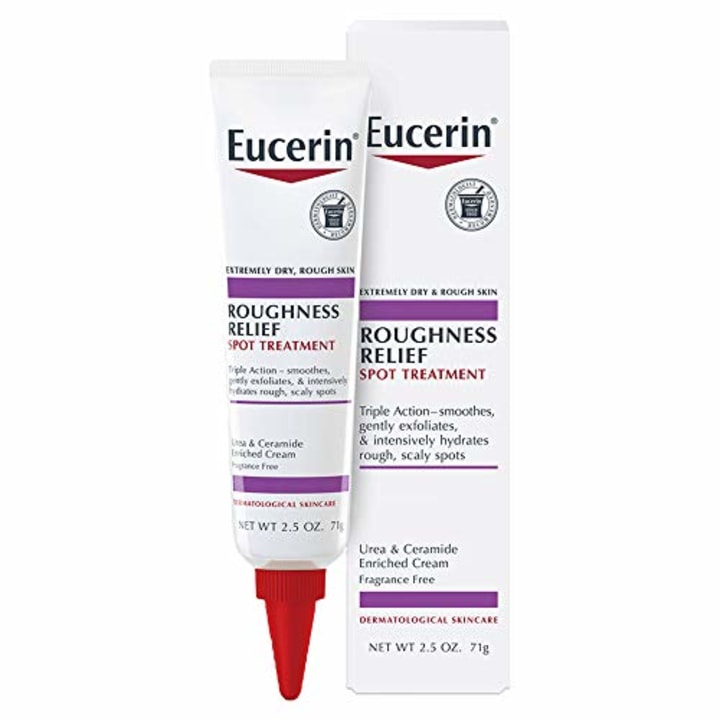
2. CeraVe Healing Ointment
Dermatologists love this non-comedogenic, lanolin-free formula, because it doesn't irritate the skin. As it's almost half petrolatum (qualifying it as an ointment), is enriched with ceramides (to restore your skin's barrier) and it also contains hyaluronic acid, an ingredient that helps skin retain moisture.
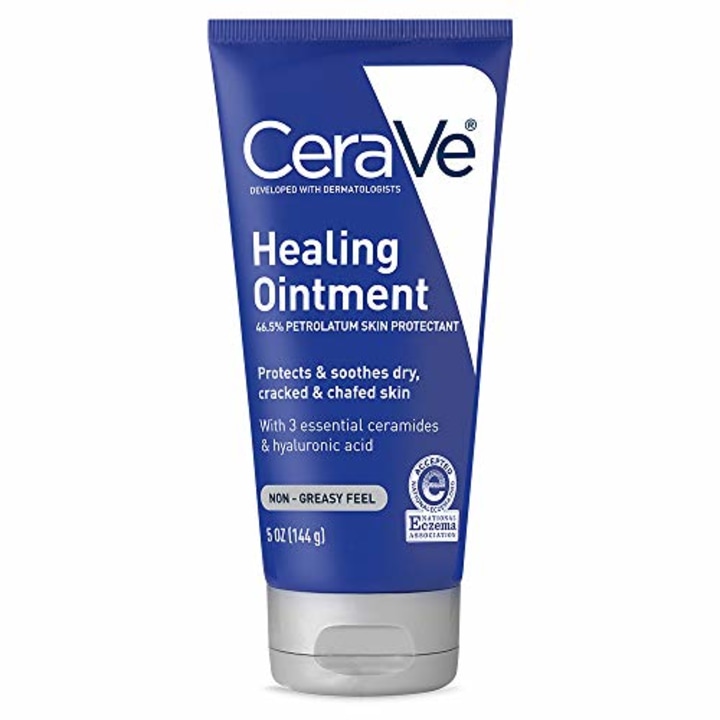
3. CeraVe SA Cream for Rough & Bumpy Skin
Jabar favors this multitasking moisturizer for its bounty of skin-loving ingredients. Lactic, salicylic and hyaluronic acids exfoliate and moisturize; niacinamide, a B vitamin, helps prevent moisture loss; and ceramides 1, 3, and 6-II help restore your skin's protective barrier. The formula is free of fragrances and dyes and it releases over time to keep your skin super soft.
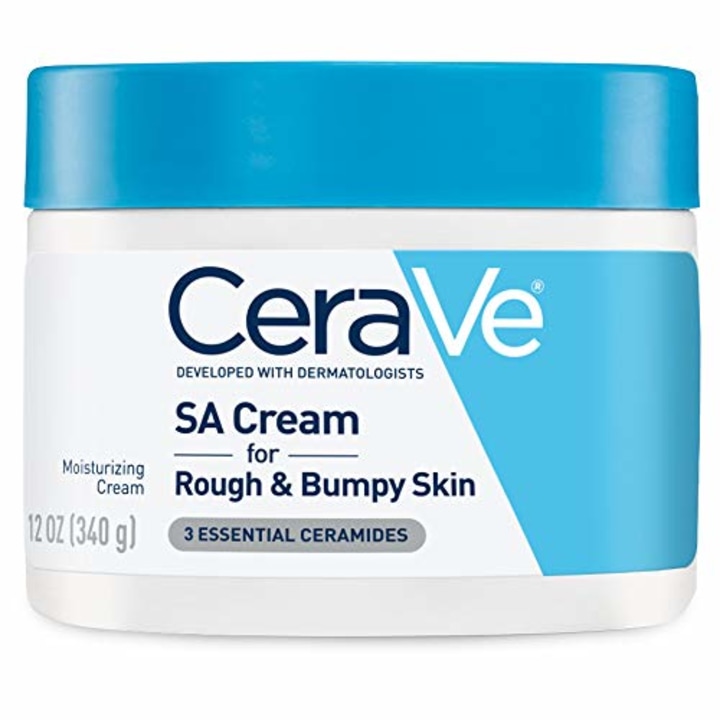
4. NatraCure 5-Toe Gel Moisturizing Socks
Solomon recommends these socks because they have a liner that uses aloe vera, vitamin E, and shea butter to intensely hydrate your skin, she says. Plus, they are infused with medical-grade mineral oil for an added boost of moisture.
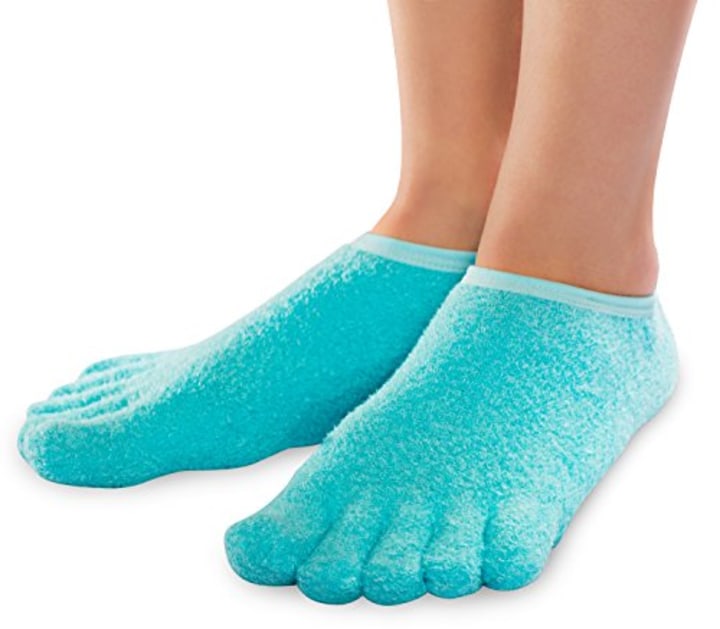
What if over-the-counter treatments don't work?
Both dermatologists say that if the cracks keep up despite proper, frequent application of high-quality over-the-counter products like these, it might be time to have your dermatologist take a peek. "Lack of vitamins, minerals and zinc in your diet can adversely affect your heel health," Solomon says. "Sometimes there can be a fungus. If it's just dry skin, dermatologists can prescribe emollients, such as ammonium lactate or urea cream, to get your skin healthy, then switch to a lotion for maintaining that health."
But the most important thing is to try and determine the cause of the cracking, says Jaber. "If it's more related to dryness, try and avoid harsh soaps and detergents and maybe, if it's really dry, get a humidifier. It's always better to prevent something than to treat it."
MORE TIPS FROM DERMATOLOGISTS
- Best moisturizers for dry skin
- How to choose the best anti-aging products
- Best dandruff shampoos
- A better way to take a shower
- The best sunscreens for kids, according to dermatologists
Want more tips like these? NBC News BETTER is obsessed with finding easier, healthier and smarter ways to live. Sign up for our newsletter and follow us on Facebook, Twitter and Instagram.
How To Fix Hard Skin On Feet
Source: https://www.nbcnews.com/select/lifestyle/how-care-dry-cracked-heels-according-dermatologists-ncna1080001
Posted by: bittnerwhyall89.blogspot.com

0 Response to "How To Fix Hard Skin On Feet"
Post a Comment